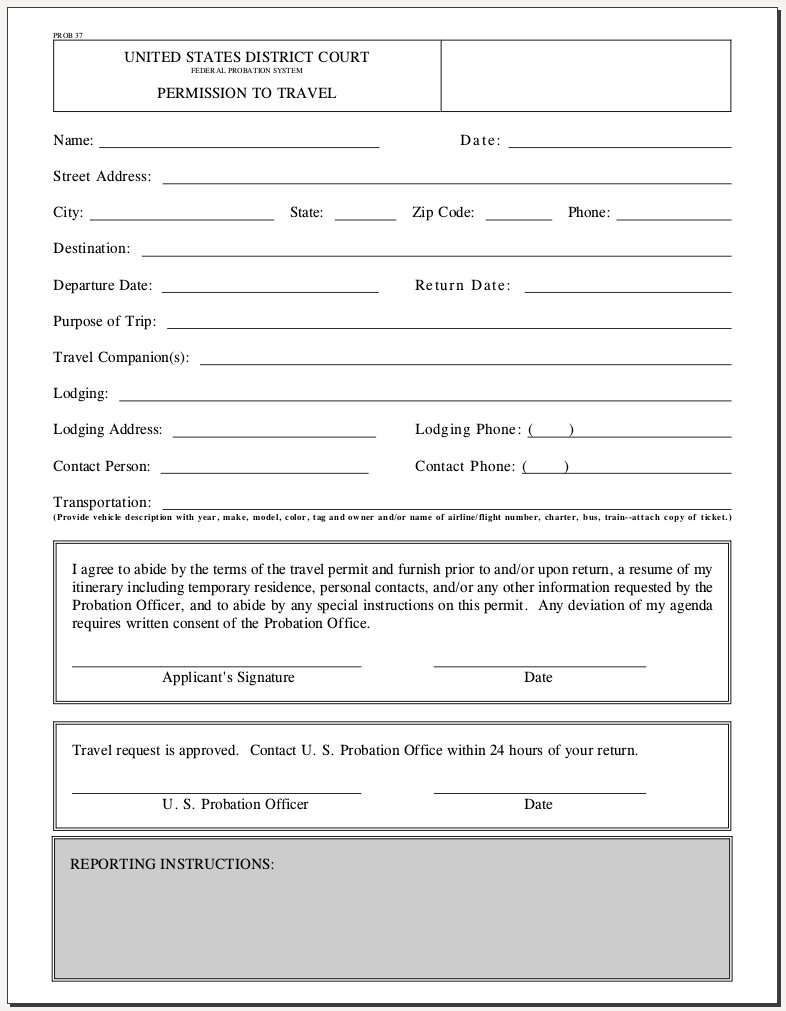 [Federal Probation System Form PROB-37, “Permission To Travel”. Note that even as used for probationers, this form is illegal: It lacks the required OMB approval, OMB control number, and Paperwork Reduction Act notice.]
[Federal Probation System Form PROB-37, “Permission To Travel”. Note that even as used for probationers, this form is illegal: It lacks the required OMB approval, OMB control number, and Paperwork Reduction Act notice.]
Have all travelers become convicted criminals subject to court supervision, who have to apply in advance for permission from the government every time they want to travel?
And does the US government have extraterritorial jurisdiction over travel worldwide?
Apparently so, at least in the eyes of the Department of Homeland Security.
Case in point: The National Vetting Center (NVC).
The NVC was established pursuant to President Trump’s February 2018 executive order NSPM-9. The “vetting” in the name is what President Trump has referred to as “extreme vetting” of immigrants and non-US citizens visiting or transiting the US. The first use of the NVC will be to “vet” citizens of countries in the US Visa Waiver Program applying for ESTA permits (online visas) to travel to the US.
The NVC is an inter-departmental body coordinated by a DHS component, US Customs and Border Protection (CBP), and this week the DHS has published a Privacy Impact Assessment (PIA) and released a redacted version of the Implementation Plan for the NVC.
Here’s how the DHS describes the purpose and role of the NVC:
Every day, the U.S. Government determines whether to permit individuals to travel to and enter the United States… and consider other actions…. The U.S. Government has developed several different processes and procedures to evaluate an individual’s suitability for access to the United States or other travel- or immigration- related benefits against information available to the U.S. Government (generally referred to as “vetting”)….Creating, maintaining, and facilitating the operation of that process is the primary mission of the NVC.
As even this summary self-description shows, the NVC is founded on a fundamental disregard for human and Constitutional rights.
Read More →
